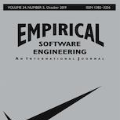The Entity Set Expansion (ESE) task aims to expand a handful of seed entities with new entities belonging to the same semantic class. Conventional ESE methods are based on mono-modality (i.e., literal modality), which struggle to deal with complex entities in the real world such as: (1) Negative entities with fine-grained semantic differences. (2) Synonymous entities. (3) Polysemous entities. (4) Long-tailed entities. These challenges prompt us to propose Multi-modal Entity Set Expansion (MESE), where models integrate information from multiple modalities to represent entities. Intuitively, the benefits of multi-modal information for ESE are threefold: (1) Different modalities can provide complementary information. (2) Multi-modal information provides a unified signal via common visual properties for the same semantic class or entity. (3) Multi-modal information offers robust alignment signal for synonymous entities. To assess the performance of model in MESE and facilitate further research, we constructed the MESED dataset which is the first multi-modal dataset for ESE with large-scale and elaborate manual calibration. A powerful multi-modal model MultiExpan is proposed which is pre-trained on four multimodal pre-training tasks. The extensive experiments and analyses on MESED demonstrate the high quality of the dataset and the effectiveness of our MultiExpan, as well as pointing the direction for future research.
翻译:暂无翻译




